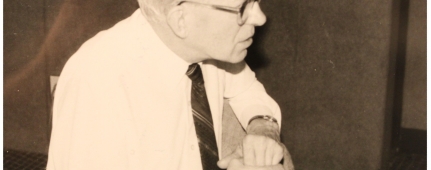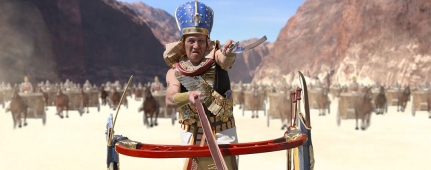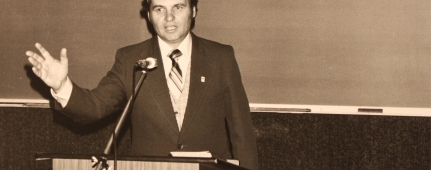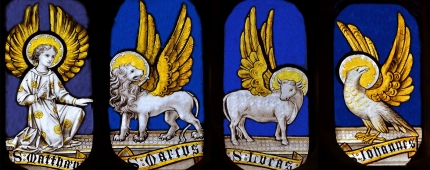Luke 24:34—Was Jesus invisible to mortal eyes before and after He appeared?
Problem: The phrase “He appeared” means “He made Himself visible” to them (cf. 1 Cor. 15:5–8). Jesus also disappeared (Luke 24:31). Some take this to mean that Jesus was not essentially material, but simply materialized when He appeared to His disciples and dematerialized when He disappeared. However, other passages declare that Jesus had the same continuously material body of flesh and bones in which He died (Luke 24:39; John 20:27).
Solution: That Jesus’ resurrection body was essentially material is clear from the following facts. First of all, Christ’s resurrection body could be seen with the naked eye during His appearances. They are described by the word hora_o (“to see”). Although this word is sometimes used of seeing invisible realities (cf. Lk. 1:22; 24:23), it often means to see by the naked eye. For example, John uses the same word (hora_o) of seeing Jesus in His earthly body before the Resurrection (6:36; 14:9; 19:35) and also of seeing Him in His resurrection body (20:18, 25, 29). Since the same word for body (s_oma) is used of Jesus before and after the Resurrection (cf. 1 Cor. 15:44; Phil. 3:21), and since the same word for seeing it (hora_o) is used of both, there is no reason for believing the resurrection body is not the same literal, physical body.
Furthermore, even in the phrase “he let Himself be seen” (aorist passive, ophth_e), it simply means that Jesus took the initiative to show Himself to the disciples, not that He was essentially invisible. The same form (“He [they] appeared”) is used in the Greek OT (2 Chron. 25:21), in the Apocrypha (1 Mac. 4:6), and in the NT (Acts 7:26) of purely human beings appearing in normal physical bodies. In this passive form the word means to initiate an appearance for public view, to move from a place where one is not seen to a place where one is seen. It does not necessarily mean that what is by nature invisible becomes visible. Rather, it means more generally “to come into view.” There is no reason to understand it as referring to something invisible by nature becoming visible, as some do. For in this case it would mean that these human beings in normal pre-resurrection bodies were essentially invisible before they were seen by others.
Furthermore, the same event that is described by “He appeared” or “let Himself be seen” (aorist passive), such as the appearance to Paul (1 Cor. 15:8), is also described in the active voice. Paul wrote of this same experience in the same book, “Have I not seen Jesus Christ our Lord?” (1 Cor. 9:1). But if the resurrection body can be seen by the naked eye, then it is not invisible until it makes itself visible by some alleged “materialization.”
Jesus also disappeared from the disciples on other occasions (see Luke 24:51; Acts 1:9). But if Jesus could disappear suddenly, as well as appear, then His ability to appear cannot be taken as evidence that His resurrection body was essentially invisible. For by the same reasoning His ability to disappear suddenly could be used as evidence that it was essentially material and could suddenly become immaterial.
Finally, there are much more reasonable explanations for the stress on Christ’s self-initiated “appearances.” First of all, they were the proof that He had conquered death (Acts 13:30–31; 17:31; Rom. 1:4). Jesus said, “I am He who lives, and was dead, and behold I am alive forever more. Amen. And I have the keys of Hades and of Death” (Rev. 1:18; cf. John 10:18). The translation (“He let Himself be seen,” 1 Cor. 15:5ff) is a perfectly fitting way to express this self-initiated triumphalism. He was sovereign over death as well as His resurrection appearances.
Furthermore, no human being saw the actual moment of the Resurrection. But the fact that Jesus appeared repeatedly in the same body for some 40 days (Acts 1:3) to over 500 different people (1 Cor. 15:6) on 12 different occasions is indisputable evidence that He really rose bodily from the dead. In brief, the reason for the stress on the many appearances of Christ is not because the resurrection body was essentially invisible and immaterial, but rather to show that it was actually material and immortal. Without an empty tomb and repeated appearances of the same body that was once buried in it, there would be no proof of the Resurrection. So it is not surprising at all that the Bible strongly stresses the many appearances of Christ. They are the real proof of the physical Resurrection.
See All Problems
This excerpt is from When Critics Ask: A Popular Handbook on Bible Difficulties (Wheaton, Ill.: Victor Books, 1992). © 2014 Norman Geisler and Thomas Howe. All rights reserved. Used by permission. Click here to purchase this book.














